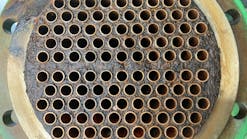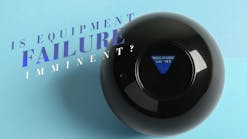Centrifugal Compressor Features a Damper Seal Design
July 2, 2004
Related To:
Dresser-Rand's damper seal design for DATUM centrifugal compressors improves rotordynamic stability at high pressures and reduces section-to-section leakage in straight-through and back-to-back compressor configurations by as much as 50 percent compared with units relying on older honeycomb design seals. The result is reduced recycled flow, lower energy consumption, and fewer compressor bodies required for each application. D-R's engineers developed swirl brakes and hole pattern damper seals to reduce excitation and improve damping, greatly reducing the likelihood of rotordynamic instability. The damper seal replaces traditional honeycomb seals and is machined from solid, high-grade aluminum. The honeycomb seal is fabricated from a very hard 'super-alloy' material. In the case of the hole pattern seal (because a softer material may be used), the damper seal can be made with clearances similar to those of a standard labyrinth to eliminate any negative impact on compressor performance. As pressures, power and temperature increase, the seals may be manufactured from other materials, as appropriate.To prove its rotor dynamics technology, D-R conducted full-load, full-pressure rotordynamic stability measurements on a seven-stage, back-to-back DATUM re-injection compressor operating at 6,000 psi (413.8 bar). The test clearly demonstrated the effectiveness of hole pattern damper seals and swirl brakes. The result was increased stability as discharge pressures increased, and reversed what had been the norm -- increasing instability with increasing pressure.




